Opinion & analysis
Imaging India’s rape victims
Published
8 years agoon
By
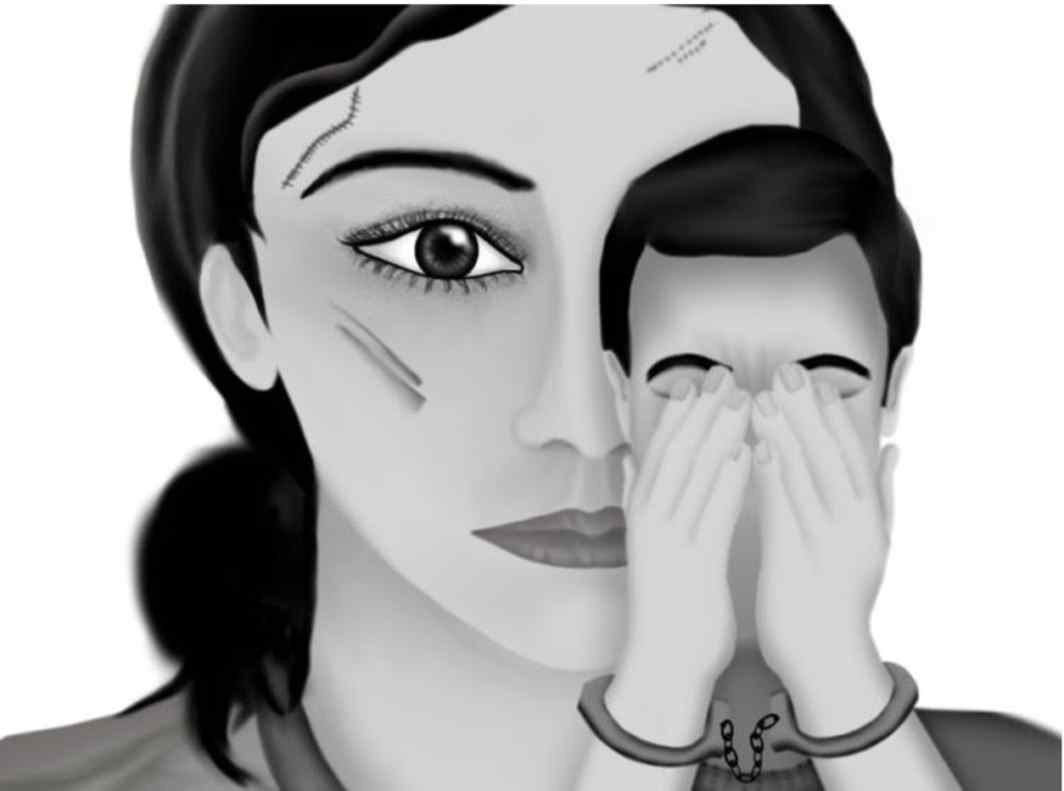
By Ariel Sophia Bardi
Breakthrough India tried to reset the narrative on imaging rape, sexual violence through a social media campaign – #RedrawMisogyny
On a balmy Sunday in April, a few dozen designers sat at a pub in South Delhi scrutinizing a projection screen. It showed an illustration of a woman in a torn violet shirt. A pair of bangles hung off her wrist. She cowered close to the floor, her head sunk between her hands. On the wall behind her, a man’s shadow loomed menacingly.
“She’s being shown as a weakling,” someone in the front row said. “We need to show her as a survivor.”
A few designers objected to the artfully ripped clothing, which had a cinematic quality, conjuring the image of a heroine roughed up, yet still glamorous. But there is no universal idiom for assault. “You could be in perfectly okay clothes and still be violated,” a young woman pointed out.

One of the stock images Indian news outlets have traditionally used to depict sexual assault. Courtesy of Breakthrough India
In India, press laws prevent media outlets from identifying victims of sexual violence, or using any photographs that might lead them to be identified. So, drawing from a tiny common-domain database news agencies rely on a set of stock images to illustrate reports of assault. But these newsroom images, featuring a half-dozen variations on near-identical themes, reinforce harmful stereotypes surrounding sexual violence, skewing perceptions of accountability.
Women are depicted as helpless (though still potentially culpable) victims, huddled on the ground with their faces buried. Perpetrators lurk in doorways – dangerous, powerful, and unseen. The images reflect prevalent attitudes in India around assault that are mirrored in Indian popular culture, including film. A taboo around rape means that survivors are often stigmatized. In representations of violence, women are reduced to inert objects, attractive prey to be pursued and captured.
“Images are a very strong part of an article. They reinforce our own conditioning constantly,” says Priyanka Kher, head of communications at Breakthrough India, a human rights organization that uses media and pop culture as outreach tools.
It’s about planting a seed of doubt, questioning the narrative.
This past spring, Breakthrough India saw an opportunity to reset the narrative by developing updated news illustrations and sharing them with media outlets. The group devised a social media campaign—#RedrawMisogyny—and enlisted designers and volunteers to develop an alternative bank of images. With its own database of stock imagery, the first part of which was released earlier this summer, Breakthrough is determined to counter regressive media tropes and portray sexual and gender-based violence in a more informed light.
“If every time you do a search for rape and find images that are politically correct, that goes a long way,” Kher says. “It’s about planting a seed of doubt, questioning the narrative.”
There were more than 34,000 reports of sexual assault in India in 2015, according to the most recent figures released by the National Crime Records Bureau. But since rape remains starkly underreported, actual numbers are hard to gauge (in the US, where rape is also underreported, a sexual assault occurs more or less every minute.) In Delhi—dubbed India’s “rape capital”—the rate of reported sexual assaults has risen since 2012, when a 23-year-old medical student was fatally gang raped aboard a moving bus, drawing mass coverage around the world. The so-called “Nirbhaya case”—named for the Hindi word for “fearless,” which the press used as a pseudonym for the victim—made violence against women front page news.
Two months before the Nirbhaya case, an article in The New York Times on Indian news reports of rape observed that “the emphasis still appears to be on the disgraced victim.” It pointed toward the enduring trope of the “shamed woman,” seen in illustrations of a woman with her head bowed, and continued: “Sometimes, this woman also happens to be somewhat scantily clad.”
A study carried out by the University of Oklahoma on the impact of news images, which used the 2003 Iraq war as a case study, found that media visuals are instrumental in directing public opinion. Unlike the actual text of the stories, which relied on “arguments and details” and were “cognitive in nature,” the images shown invoked only “powerful, instantaneous emotion.”
Newsroom images rely on a vocabulary of visual shorthands: ripped clothing, wide-mouthed screams, shadowy predators. They reinforce a larger double standard around shame and sexual purity, which has deep roots in India’s visual culture. The image of Bharat Mata, or Mother India, allegorizes the nation as a patriotic Hindu goddess. Originally conceived under British rule as a powerful anti-colonial emblem, the symbol linked colonial possession to sexual dishonor, imagining the independent nation as a woman’s unviolated body. In The Ramayana, the ancient Sanskrit epic poem that is reenacted annually all across the subcontinent, the kidnapped queen, Sita, is rescued from a long imprisonment under a lustful demon. Dishonored, she is forced to abandon her kingdom and is exiled to the forest.
Though the modern-day Bollywood film industry toys with female empowerment, Hindi cinema also has peddled the “shamed woman” trope. In what film scholar Jyotika Virdi has termed “rape-revenge” films, the camera lingers on lone, vulnerable women, signaling what Virdi calls “the rape threat.” Once violated, the disgraced heroines become desperate vigilantes, embarking on quests for comeuppance.
Media reporting on sexual assault remains steeped in a cinematic language, recycling outdated mores. Newsroom tropes, with their shameful, terror-stricken women and prowling, lustful men, script visual narratives that are wholly divorced from the realities of rape. The journalist Joanna Jolly, a former BBC South Asia correspondent, has said that the illustrations misrepresent assault as “stranger danger,” an “almost Victorian idea of rape” that is taken out of context and only committed by “madmen, who attack women at night.” Survivors of sexual assault are, in fact, likely to have known their assailants.
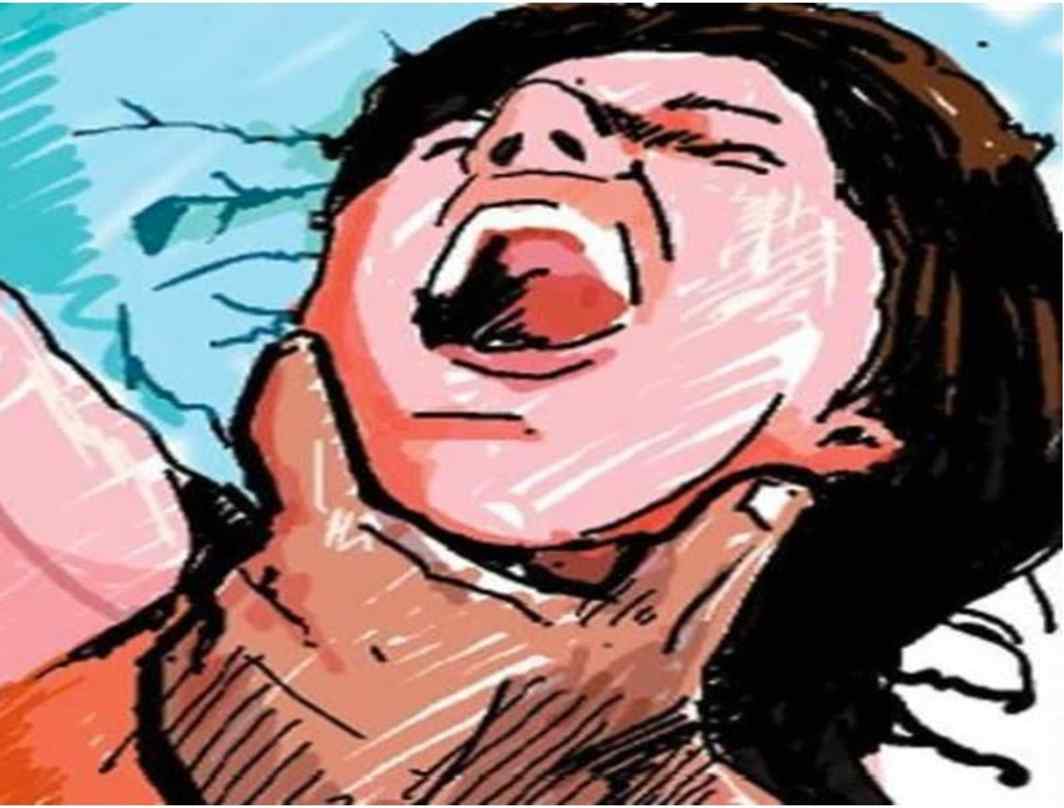
A traditional image. Courtesy of Breakthrough India.
“It’s like any political propaganda. It shapes our thinking,” says Ruhie Kumar, a communications consultant who grew up flipping through her mother’s Hindi-language women’s magazines, which used similar kinds of images when illustrating violence against women. “If we don’t have an intervention, we’re going to have a really off-balance narrative being pushed far and wide.”
A 2015 report from Australia’s National Research Organization for Women’s Safety found that news reports on violence against women rely on what’s called “episodic framing.” Unlike “thematic framing,” which uses social factors such as gender inequality to contextualize incidents, episodic or event-based framing “tends to elicit individualistic rather than societal attributions of responsibility.” In India, this tendency often leads to victim-blaming.
This past winter, in a forlorn patch of a Dehli park behind a strip of restaurants, a woman was allegedly assaulted by a waiter. In its reporting, The Times of India, India’s widest read English-language daily paper, made mention of the woman’s night of “revelry” and “pub-hopping.” To illustrate the article, it ran an image of a female prisoner slinking forward in a jail cell. Bars cast long shadows over her face.
“For me to counter it, because I’m so brainwashed, I have to really take a step back,” Kumar says.
That was precisely the point of the gathering of designers in April: to debate how to develop a better narrative framework for reporting and illustrating assault. But before drafting new images, the group first continued to dissect the news illustrations currently in circulation, which can appear up to several times a week in Indian newspapers.
The next picture projected on the screen that morning captured, unnervingly, the vantage point of the assailant. From eye level, a grasping hand reached forward. A woman shrunk back, her palm shielding her face. All the viewer could see was a pair of widened eyes and a crown of dark curls.
“How can we avoid sensationalizing?” the emcee asked. The audience grew quiet, save for a little girl dressed in bubblegum pink, who babbled baby-talk in the back row. “Can we give out a powerful image using more subtle imagery?”
A woman in white raised her hand. She had seen the illustration in multiple news reports. “The perpetrator is just a symbol of what it means to be a perpetrator,” she complained. It was a cartoon—a lurid abbreviation of real horror. “We need to create a narrative that gives out the message, enough is enough.”
“Maybe if we show the survivor dragging the perpetrator to the police station,” suggested a designer. “Head up, not chin down.”
Another hand shot up. “From my experience, trying to do anything with gender in a newsroom is very difficult,” the hand-raiser ventured. “The only solution is to shove it down their throats!” the others shouted, sparking a round of applause.
Illustrations used by Indian media outlets are typically developed by visualizers working alongside staff reporters and editors covering stories of domestic and sexual violence. They can also be sourced from various stock photo databases and online platforms. Though repetitive—and ridden with troubling cliches—dramatized sketches of events also help protect the anonymity of victims.
Later in the afternoon, Himel Sarkar, digital coordinator for Breakthrough India, held up his Samsung smartphone: A national paper had just reported a gang rape in Mumbai. Under the headline was an illustration—a long-haired girl, groveling in obvious fear—that had appeared earlier in the slideshow. “Case in point,” Sarkar said.
After a chicken biriyani lunch, designers split up into small groups, tasked with preparing preliminary sketches. A woman in a gray sari—Neha Dixit— complained of the “darkness” and “end-of-the-world hopelessness” to which the media defaulted when representing rape. There was an appetite for tearstained cheeks and ruined lives, but none for solidarity and longer-term support.
“I was thinking to flip it,” Dixit said quietly, “to show the victim as a survivor.”
“And remove the perpetrator?” asked Rana Bhanu, a bearded illustrator, leaning across the table. “Is that something we’re willing to do?”
Taking out a small notepad, Valiullah Hashmi, a Delhi-based artist in his mid-twenties, sketched out Lady Justice balancing a set of scales—the survivor on one side, the assailant on the other. Others protested against symbolism, seeing it as a form of erasure.
“The more abstract we make it… the silencing [around rape] will get stronger,” argued photojournalist Ruhani Kaur.
“Whenever we write about rape, it’s written in a passive voice: ‘A woman was raped,’” explained journalist Shobha SV. “The [rapist] never really comes into focus.”
A little while later, the groups presented their ideas. One sketch showed an outstretched hand—now a woman’s—clawing at the face of an astonished assailant, drawing little globs of blood. In another, a boy stood smiling. His shadow revealed devil’s horns. “It shows that someone you know can also be the one to create havoc in your life,” explained the artist. “He’s the one who should be shamed.”
Men still leered, not shadowy monsters, but real guys in jeans, and this time the viewer faced them. A young woman stood alone at night, men staring at her from behind. But she looked normal, unafraid; it was the oglers whose behavior looked wrong.
– Courtesy: Columbia Journalism Review
You may like
-
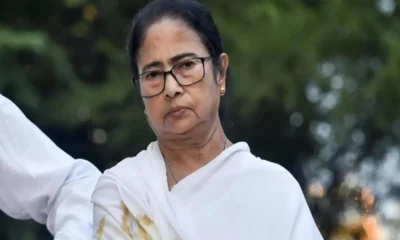

Kolkata horror: Centre responds to Mamata Banerjee’s letter to PM Modi on increasing rape cases
-
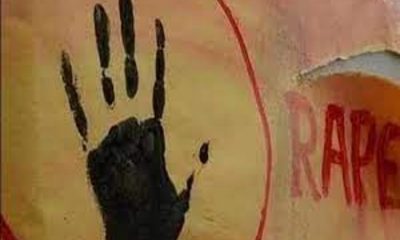

Rajasthan: 4-year-old raped in Dausa, accused sub-inspector arrested
-


Muzaffarnagar: Father-in-law rapes daughter-in- law, husband leaves her saying she is his mother now
-


Rajasthan: 3 men held for allegedly raping minor girl, body burnt in coal furnace
-
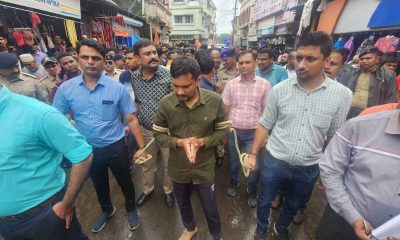

Shocking: Gujarat man held for raping girl, police call it love jihad case, parade him publicly
-


Delhi: Tantrik rapes 14-year-old girl several times, impregnates her, FIR registered
Opinion & analysis
Never say never again: Nitish Kumar’s expertise at hoodwinking allies shines through!
Nitish Kumar does it again!
Published
3 years agoon
August 9, 2022By

By Vikram Kilpady
Possibly the first state government to fall after the ascendance of the Modi-fied BJP without that party’s hand in the machinations has just shaken up the political landscape in Bihar, and the country. Nitish Kumar has pulled the rug from under the feet of the party. But since history has seen several turns first as a tragedy then as a farce, as noted by Hegel and Marx, Nitish Kumar possibly has the last laugh since he’s done the tragedy-farce duo twice. First, with the Rashtriya Janata Dal and, now, with the BJP, which among its many leaders has one man who gets called Chanakya way too often.
Once the party with a difference, the BJP has mastered the game of overturning elected governments; Madhya Pradesh where a maharajah switched to his aunt’s party, twice in Goa where elected Congress MLAs found faith in a new boss, Maharashtra where the cadre-strong Shiv Sena was ripped apart by a minister’s ambition, Karnataka where Operation Lotus blossomed first and spread its petals across the country.
Soon after the Modi magic of 2014, the dispirited opposition found new hope in the victory of Nitish Kumar and Lalu Yadav in the Bihar elections of 2015. But that was short-lived, Nitish found himself stifled by the ambition of Tejashwi Yadav and changed his mind, walking back to the BJP, which was eager to support him.
The 2020 election had the writing on the wall written in a more legible hand. The BJP won 74 seats, just one short of the party with the most seats, the RJD, which won 75. Nitish Kumar came third with 43 seats. The BJP was gaining at the cost of the Janata Dal United, which beat down Chirag Paswan’s rhetoric but couldn’t manage enough MLAs. The national party cannibalised its partner several times over throughout their association. The symbiosis of the initial years under Vajpayee was becoming a brain and brawn drain for the JDU. The election results were not free from controversy though, with the RJD alleging ballot boxes were changed in the middle of the night. The elections may have been won by the BJP and Nitish Kumar, helped by the image of Prime Minister Narendra Modi, but politics is not just platitudes, it also involves dirty work.
The use of RCP Singh by the BJP pointed at the potential of a Shiv Sena redux in the JDU, prompting the old fox to return to familiar Janata buddies, though once stabbed and all. But what is politics without the choosing of strange bedfellows, even if it borders on promiscuity and worse.
Read Also: Bihar BJP accuses Nitish Kumar of betraying Bihar people
The other angle to see the Bihar turn is from the lens of national politics. The idea of a country rid of the primary opposition party, aka becoming Congressmukt Bharat, has gained popular acceptance among the many for whom democracy is just voting in a new government. The turning of the Congress from its trademark white kurta to black attire was seen as a gimmick by the mainstream media. Far from a gimmick, the party was using what it encountered in Tamil Nadu where it rides on an ally’s stronger connect. The DMK’s parent, the Dravidar Kazhagam and its offshoots, still wears black shirts in protest against the idea of a homogenous India smearing over the vast differences between the country’s many constituents. With Hindutva becoming that all-unifying glue being applied by the BJP across the length and breadth of India, the Congress’s choice of black shows a new savvy.
Covid may have eclipsed the economy but many other slights and the worsening employment situation have India on uneven terrain. The Centre has to hold, but with accountability of successive state governments now enveloped buried in the image of the much-sought-after Strongman, an image that papered over the stark inadequacies of his administration, and won him and his party elections handsomely. The country was wearily dragging its battered economic self for another election some two years away. Nitish Kumar’s somersault has brought realpolitik back into the mix but investing all hope in serial side-switchers can be harmful for one’s emotions and well-being.
To be a rock for the Opposition, Nitish Kumar should not roll. But can old dogs learn new tricks?
Nitish Kumar stakes claim to form new Mahagathbandhan government in Bihar
India News
Yearender 2021: When hate uncovered its face
Instead of protecting victims of such incidents, the perpetrators not only enjoy immunity from the law, but also the administration in BJP-ruled states punishes victims. The use of false cases and arrests under draconian laws like UAPA are the preferred weapons.
Published
4 years agoon
December 31, 2021By
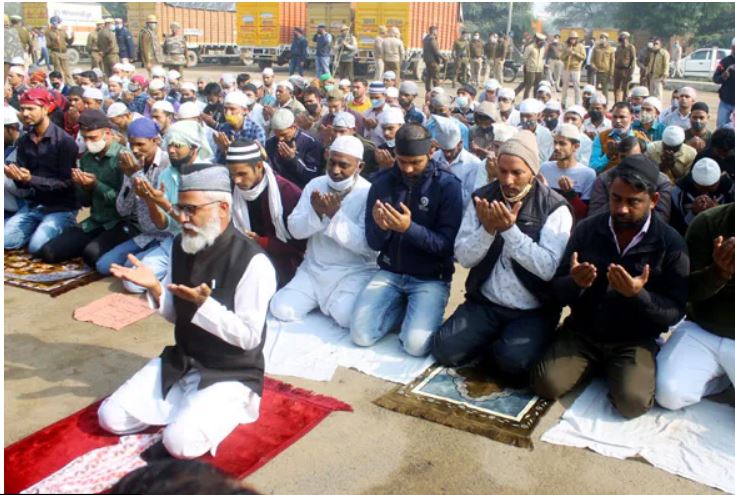
By Mohammad Javed Rasheedi
2021 is about to melt into 2022 in less than 48 hours. Majoritarian politics continued to hold its way over the country this year. But this year, it was not just Muslims but also Christians who felt the heat of Hindutva attacks across India as right-wing Hindu groups waged a culture war against them. Several churches have been attacked and statues of Jesus broken, the latest being in Ambala’s Army Cantonment, the scene of many a Rudyard Kipling work.
December saw targeted hate speeches against minorities. The one at Haridwar saw many participants vow to even take up weapons to redeem their faith by killing non-Hindus. The Hindu right-wing has waged war against Christians accusing them of religious conversion through their missionary work and Muslims for Love Jihad, an Islamophobic trope singling out Muslim men for falling in love with Hindu women and then converting them into Islam. However, such allegations targeting minorities have become a cornerstone of Hindu right-wing nationalism.
The Association for the Protection of Civil Rights, United Against Hate, and United Christian Forum jointly released a fact-finding report highlighting the series of attacks on churches and hate speech against Christians across India. According to the report, India has recorded more than 300 attacks on Christians and worship places within the first nine months of 2021.
Of the 305 incidents, 66 took place in Uttar Pradesh, 47 in Chhattisgarh and at least 32 in Karnataka.
While another report of the United Christian Forum had claimed that India reported more than 400 incidents of violence against Christians across the country. Among those, the incident involved storming churches, burning Christian literature, attacking schools and assaulting worshipers.
However, it is shocking that only 30 FIRs have been registered so far in these cases. On many occasions, restrictions were imposed on people to carry out religious ceremonies.
First on the list of attacks is the one on October 3, where a mob of 250-300 persons barged into a Roorkee church in Uttarakhand and attacked people, destroyed CCTV cameras, and vandalized church premises. Many reports said there were only 12 inside the church for prayers when the attack took place.
Apart from this, the attacks on churches were also reported from BJP-ruled states Haryana, Uttar Pradesh, Madhya Pradesh and Karnataka. And these attacks have taken place over allegations of religious conversion. Christians prayers meetings have also been stopped by the same Hindu mob who had stopped Jumma namaz in the so-called Millennium City, Gurugram. The city also saw an attack on a school’s Christmas celebration.
In the last week of 2021, the bank accounts of Mother Teresa’s Missionaries of Charity were frozen over FCRA claims, West Bengal Chief Minister Mamata Banerjee tweeted about the heartlessness behind the move affecting the charity of the outfit.
Some 22,000 patients and employees have been left without food and medicines, the West Bengal Chief Minister had tweeted.
The Missionaries of Charity was founded in 1950 by the late Mother Teresa, a Catholic nun from Macedonia, who moved to India and took care of the destitute and the poor and won the Nobel Peace Prize in 1979 for her work.
Hate speeches have been curtailed by some norms, keeping them among friends and family. The last week of 2021 saw more public hate speeches in the country. The controversial Dharam Sansad organized in Haridwar, other such events in Delhi and Chattisgarh saw where priests and leaders taking an oath to kill Muslims, and even urged Hindus to arm themselves against the Muslims to make India a Hindu Rashtra.
With next year’s assembly elections in Uttar Pradesh, Uttarakhand, Punjab, Goa and Manipur due shortly, the increase in such hate is an attempt at reviving polarisation.
The violence in Tripura, where VHP hoodlums attacked Muslims and vandalized some of their mosques and Friday prayers disruptions at designated places at Gurugram were also the prime example of rising hate against Muslims.
Anti-Hindu violence in parts of Bangladesh triggered violence in Tripura. The communal riots erupted on October 26 after a rally organized by the Vishwa Hindu Parishad to protest against the attacks on Hindus in Bangladesh turned violent.
The VHP and the Hindu Jagran Manch organized rallies in different parts of the state to protest against the violence in Bangladesh. Later, the VHP and other right-wing groups denied any role in the violence.
The anti-Hindu violence in Bangladesh, which erupted during the Durga Puja festival, was triggered by rumours that the Quran had been insulted in one of the pavilions set up for the celebrations. Seven people were killed, several temples desecrated, and hundreds of houses and business establishments of the Hindu minority were torched.
However, many Muslim groups alleged political conspiracy claiming that the minorities were being targeted in the north eastern state. There were many arrests and some journalists covering the riots in Tripura were also detained. Those who tweeted in favour of Tripura’s Muslims also found themselves being served notices by the state police.
The Uttar Pradesh government had faced severe criticism from the opposition over the killings of Kasganj youth Altaaf in mysterious circumstance. He had been arrested on suspicion of eloping with a Hindu woman. Again, the smoldering love jihad theory. The law and order in Uttar Pradesh, which had earlier won so much praise from PM Modi and other BJP leaders, has been roundly criticized by opposition parties in Uttar Pradesh.
The family of the deceased had alleged that he was tortured by police in the lockup, which led to his death. Police claimed the accused killed himself using the drawstring of his jacket’s hood when he went to the lockup washroom.
Apart from mob lynching, Muslim street vendors in Ahmedabad and some parts of Madhya Pradesh and other parts of the country have been threatened and disallowed from pursuing their livelihood. In Ahmedabad, the Hujarat High Court stepped in to tell off the civic authority to desist from such measures. In Assam, poor peasant families cultivating land for decades were brutally evicted only because they belonged to the Muslim minority. The point-blank shooting of Moinal Haque by police personnel caught on video and the subsequent death dance by a photographer with the remains indeed were a mirror for the crumbling facade of secular India, now overtaken by an aggressive mindless herd mentality spewing hate and violence.
Read Also: Masik Shivratri 2022: Know date, shubh muhurat, puja vidhi, significance
An empty desolate car park outside Sector 37 police station in Gurugram where Muslims had performed Friday prayers for more than a decade turned into a battleground of faith. Hindu right-wing groups staged protests, sloganeered during Friday prayers and held a Govardhan puja at the namaz site just to deny namaz here.
Instead of protecting victims of such incidents, the perpetrators not only enjoy immunity from the law, but also the administration in BJP-ruled states punishes victims. The use of false cases and arrests under draconian laws like UAPA are the preferred weapons.
Haryana news
Dushyant Chautala stood up for farmer’s cause; opposition failed
The Indian farmer constitutes 40 per cent of the country and an even higher percentage of its poor and as the available data points out, is under immense stress.
Published
4 years agoon
July 9, 2021By
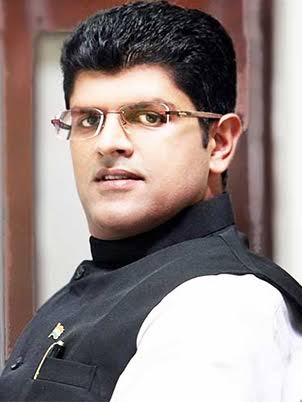
By Prateek Som
The Indian farmer constitutes 40 per cent of the country and an even higher percentage of its poor and as the available data points out, is under immense stress. The modernization of the central farm laws is nothing but an adaptation of provisions which already exist in many states, including Punjab and Haryana. How come the three acts become anti-farmer in some states and why not in many others is something the activists themselves cannot explain.
Big states like Uttar Pradesh, Bihar, Maharashtra, West Bengal, Rajasthan are not even a part of the farmers’ agitation and there is no protest against the central or state government in these states, despite the fact that BJP is not in power in some of these states. More importantly, some agriculturists and several economists have been campaigning for abolishing MSP based procurement as it is unfairly tilted towards a few states like Punjab.
The Central government has neither abolished the MSP nor does it say anything against it in the laws. If, despite this, the impression is being spread that MSP is to be abolished, this is clearly mischievous. The activists are not only spreading the misinformation about the MSP abolition but they are asking for an unreasonable clause in the law for unlimited MSP based procurement which was never a part of the previous laws related to agriculture and APMC acts.
The Indian farm bills are in line with international precedence wherein a number of developing economies have been making changes to their agriculture policies since the 1990s to encourage private sector involvement which would provide a major fillip to the sector. The International Monetary Fund has also backed the recent farm acts as being an important step in the right direction. Despite all the supportive arguments in the favour of the laws, India has seen unprecedented protest in and around the capital as a result of political vendetta.
Politics of Yogendra Yadav and Gurnam Chaduni and its irrelevance to the farmer’s cause
Raising the farmer’s issues should be an act done collectively but the state farmer activists are trying to establish a monopoly in the leadership. They are not even active in all the parts of the state, but targeting only those districts with paddy belt of cropping pattern. Most of them are politically motivated.
In an interview given to NDTV, Yogendra Yadav came out as an aspiring candidate for Haryana CM post and he was advertised as the most fit politician for the position. He formulated his own party, ‘Swaraj’, after being expelled from AAP and lost badly in polls. It is a proof that he lacks mass support. A report by Divya Bhaskar states that farmer leader Gurnam Chaduni was accused of teaming up with political parties like Congress, AAP, SAD and some independent leaders and getting into a deal worth Rs 10 crore to topple the Khattar government in Haryana in return of Congress ticket for elections. There are allegations that Chaduni is collecting funds out of the collection drive for protests and hiding the funds from other leaders. He was also blamed for instigating farmers to disrupt the January 26 celebrations at the Red Fort. Haryana CM Khattar held Chaduni responsible for instigating the farmers that led to clashes between farmers and police at Karnal just before the Kisan Mahapanchayat programme. As a result of his politically motivated efforts, Chaduni was suspended by Samyukt Kisan Morcha from meeting politicians across country. In the 2019 assembly elections, Chaduni contested from Ladwa as an Independent candidate, but suffered a heavy defeat, garnering only 1,307 votes and losing his deposit.
Yogendra Yadav and Gurnam Chaduni are mere examples of how election failures like themselves are trying to garner the support of the commoners for their own political resurrection. The claim of being a leader of the farmers is in contravention with the inconsiderable support both Yadav and Chaduni got in the polls. The Shiromani Akali Dal that left the NDA government in the pursuance of state elections and under the disguise of farmer’s demands has made zero impact on the political ground of Punjab. Their biases can not only be seen from their actions but their cause and concern for two states out of 28. The threat posed by leaders like these to the democratic process of passing of a bill can be seen through the factual analysis of what the laws actually say versus the intentional misconceptions spread by such leaders.
Since an unlimited MSP based procurement is not in the law even today, it is not clear how this is even an issue. More importantly, putting this in the law means India will get tied to distortions that MSP based prices cause in perpetuity. The government has made it clear that procurement at MSP will continue and also that the mandis will not stop functioning. Farmers will have the option to sell their produce at other places in addition to the mandis. It is worth noting that only 6% of farmers actually sell their crops at MSP rates, according to the 2015 Shanta Kumar Committee’s report using National Sample Survey data. There are fears that contract farming will lead to land loss of the small and marginal farmers to big corporates. However, adequate protection of land ownership is in place to protect farmer interests. The act explicitly prohibits any sponsor firm from acquiring the land of farmers – whether through purchase, lease or mortgage. The point to note is that contract cultivation is voluntary in nature and farmers cannot be forced into an agreement.
How Dushyant Chautala is taking initiatives for farmers
Dushyant Chautala is the only state leader who has met Central leaders regarding the farmer demands – Prime Minister, Home Minister, Agriculture Minister along with other cabinet ministers Nitin Gadkari and Piyush Goyal. No other leader in India has met them specifically for farmers’ demands. That shows the concern and responsibility on the part of the JJP leader who is a leader of the masses.
In April 2020, Deputy CM Chautala addressed that the state government will procure the crops of the farmers in a better way while saving the state from the corona epidemic. As a result of this, even in the pandemic situation, mandis have been increased to 162 from 67 for the purchase of mustard at MSP. Haryana is the only state across the country which has started procurement of mustard crop in this pandemic. In November 2020, Dushyant assured the farmers that government will buy every grain of the crop. He made procurements for non-MSP crops to get the rate of MSP crops. He also announced formation of women Self-Help Groups in all villages on the lines of successful initiative in Hisar, to increase employment opportunities for women and showcase their talent at international level.
In February 2021, Dushyant made the announcement to buy 6 crops including wheat, mustard, pulses, sunflower, gram at MSP, barley is included for the first time. Haryana is the first state to offer MSP for barley. Every farmer is to be registered on the ‘Meri Fasal Mera Byora’ portal at MSP and payment amount will arrive in the farmer’s account within 48 hours. Along with recent announcements, the schemes like Mukhyamantri Parivar Samman Nidhi Scheme, Haryana Agricultural Machinary Grant Scheme, Pragatishil Kisan Samman Yojana, Pragatishil Kisan Trainer and Kisan Mitra Scheme to promote the inclusive growth of farmers in Haryana.
The main agenda of ongoing agitations
Amidst all the chaos, the agitations by activists like Yogendra Yadav and Gurnam Chaduni are for targeting Deputy CM Dushyant Chautala. It is a matter of record that many times they carried protests outside his residence and their intention and cause are suspicious to the core as they did not target any other leader in power like this.
The agitations in Haryana are mainly against the JJP and specifically targeted towards the leadership of Deputy CM Dushyant Chautala. The attempts of the farmer leaders to make Dushyant Chautala resign from the government are nothing but petty politics to destabilize the state government. If the threat to farmers is real, why the cause of the farmers is not taken up by the farmers from masses than some farmers from selected areas and that too under the leadership of politically motivated specific leaders only who have ties with the parties who are eyeing the upcoming elections?
The high-pitched farmer agitation is not just based on incorrect perceptions of what the new farm laws will result in – the abolition of APMC mandis and MSP-based procurement – they are also not about protecting the farmer in the long run. The agitation is purely an attempt to corner the stable functioning state government, to boost the sagging political fortunes of the activist leaders by deliberately misleading farmers, to run a personal vendetta against a young and dynamic leadership of Dushyant Chautala who is making efforts for the farmers and to give chance to Congress to come in power. That is why, before the activists decided to fuel the agitation, they focused on batting for spreading misinformation, have nothing to say about non-MSP crops/livestock in the state and have no future agenda for the inclusive growth and development of farmers. And to make the matters worse, they are trying to provoke the masses against the people in power for their vested political interests.
The author is an Advocate in Supreme Court of India and National Spokesperson of Jannayak Janta Party

India vs South Africa 5th T20I: Samson shines with 37 as India push on after Gill injury

India vs South Africa 5th T20I: Tilak Varma, Hardik Pandya power India past 230 in Ahmedabad

Hindu man lynched and set on fire in Bangladesh during anti-India protests

OTT and theatrical releases this week: new films and series to watch from December 19 to 26

Thick smog engulfs Delhi, flights and trains delayed as air quality slips to very poor

India announces T20 World Cup 2026 squad, Shubman Gill dropped as Axar Patel named vice-captain

Veteran Malayalam actor and filmmaker Sreenivasan passes away at 69

T20 World Cup 2026: Selectors weigh Shubman Gill role as India squad announcement awaited

Thick smog engulfs Delhi, flights and trains delayed as air quality slips to very poor

PM Modi inaugurates India’s first nature-themed airport terminal in Assam
Afghan Men Try To Hang With The Jet Engine Of The Aircraft in Kabul- Afghanistan News – Kabul News
Trending Top 10 News: 10000 Crore Fine on Flipkart, Apple to Launch Unique Feature, Hdfc Bank Job Ad
Trending Top 10 News: Nokia 6310, Apple sales, Bachpan ka Pyar Video Kid, Dainik Bhaskar IT Raid
Trending Top 10 News: Canada bans Indian flights, Rain in Delhi NCR, AIMIM Twitter hacked, Raj Kundra case
Trending Top 10 News: Shein India, Apple New Service, Pocket Oxygen, Oppo Launched New Phone
Trending
-

 Cricket news20 hours ago
Cricket news20 hours agoIndia vs South Africa 5th T20I: Samson shines with 37 as India push on after Gill injury
-

 Cricket news19 hours ago
Cricket news19 hours agoIndia vs South Africa 5th T20I: Tilak Varma, Hardik Pandya power India past 230 in Ahmedabad
-
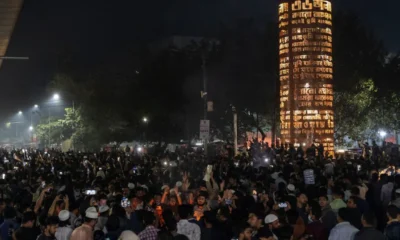
 Latest world news21 hours ago
Latest world news21 hours agoHindu man lynched and set on fire in Bangladesh during anti-India protests
-

 Entertainment20 hours ago
Entertainment20 hours agoOTT and theatrical releases this week: new films and series to watch from December 19 to 26
-
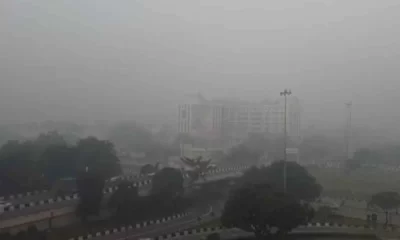
 India News6 hours ago
India News6 hours agoThick smog engulfs Delhi, flights and trains delayed as air quality slips to very poor
-

 Cricket news5 hours ago
Cricket news5 hours agoT20 World Cup 2026: Selectors weigh Shubman Gill role as India squad announcement awaited
-

 Entertainment21 hours ago
Entertainment21 hours agoBharti Singh, Haarsh Limbachiyaa welcome second child after she’s rushed to hospital mid-shoot
-

 Cricket news6 hours ago
Cricket news6 hours agoIndia vs South Africa 5th T20I: Hardik Pandya, Tilak Varma power India to 30-run win, series sealed 3-1







